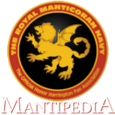TRMN:Manual of Style (headings)
| This page describes one of Mantipedia's policies and guidelines. Please read through the policy below to familiarize yourself with our common practices and rules. |
- The following Manual of Style is adapted from the document written and executed by Memory Alpha.
To create headers for different sections, use the == (two equal signs) style markup. Do not simply make text bold!
- Example: == Example header ==
When you include a header for a section, you don't need to include an extra line between the header and the next paragraph – that is automatically included by the MediaWiki software. If you find an article with such spaces, they should be removed.
Benefits of marking headers:
- sections can be automatically numbered for users with that preference set,
- a table of contents is generated from the different sections,
- sections can be edited separately,
- words in headers are given greater weight in searches,
- headlines help readers by breaking up the text and outlining the article,
- visually-impaired users may be using software which begins by giving a summary of the article, built from the heading tags.
You should capitalize the first word of a header and any proper nouns, but leave all of the other letters in lower case.
- Example: == Example header for Mantipedia's manual of style ==
Nesting
It's important to nest headers properly, mainly for the same reasons listed above. Use them in order – H2, H3, H4, ... (The top-level heading of every page is H1 – the article title itself.) Viewing the table of contents listing will give you a good clue as to how good the organization of your article is.
